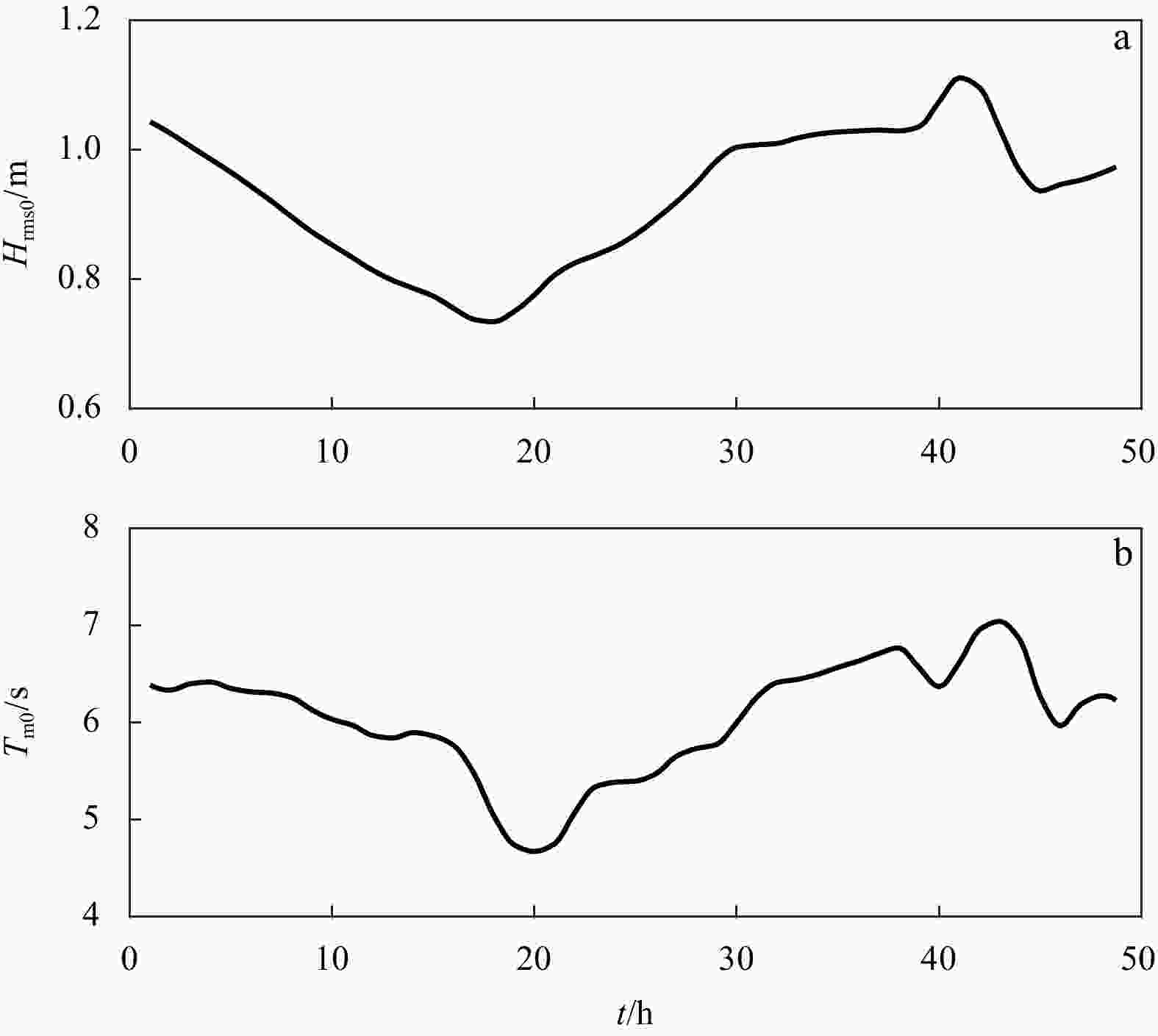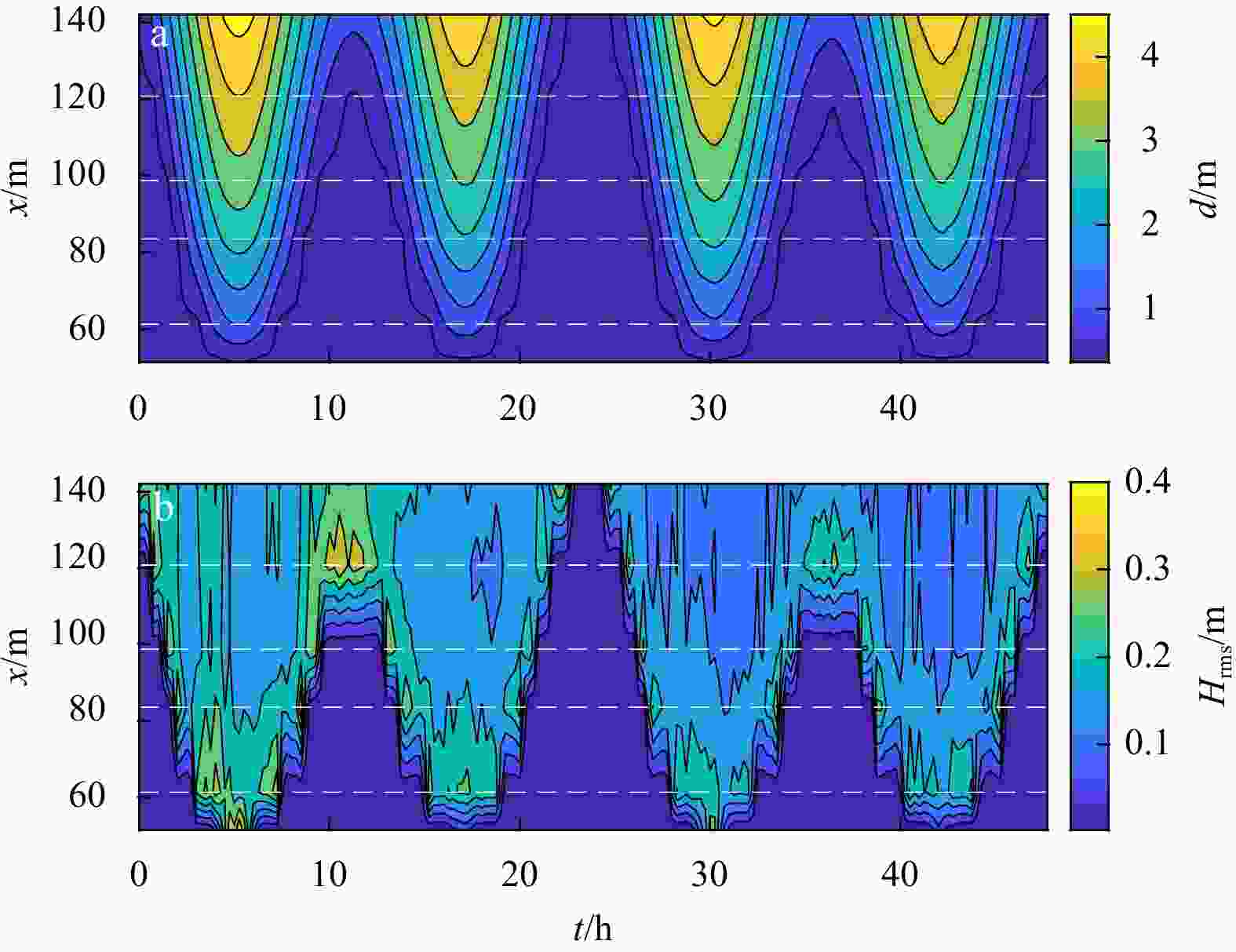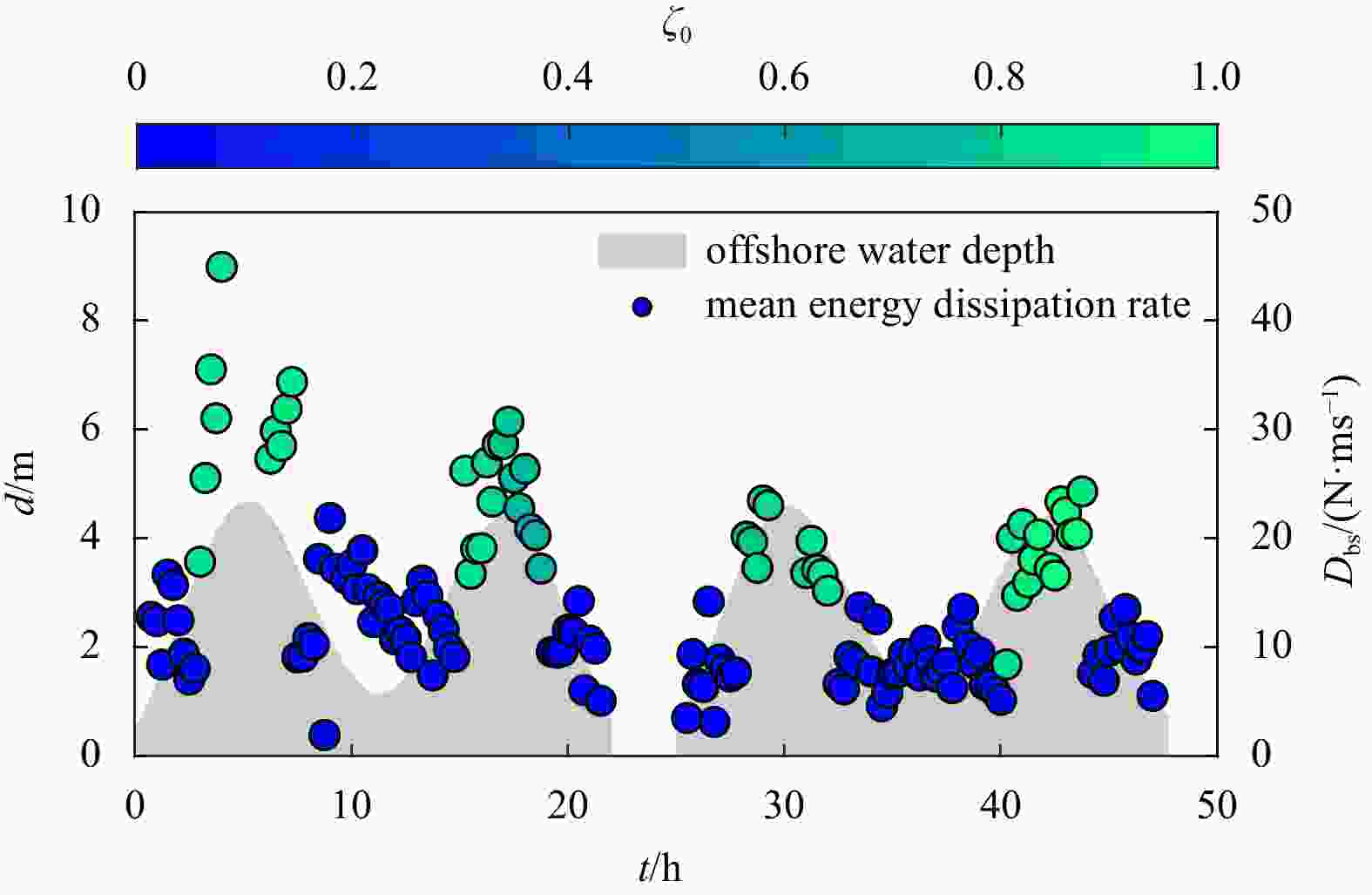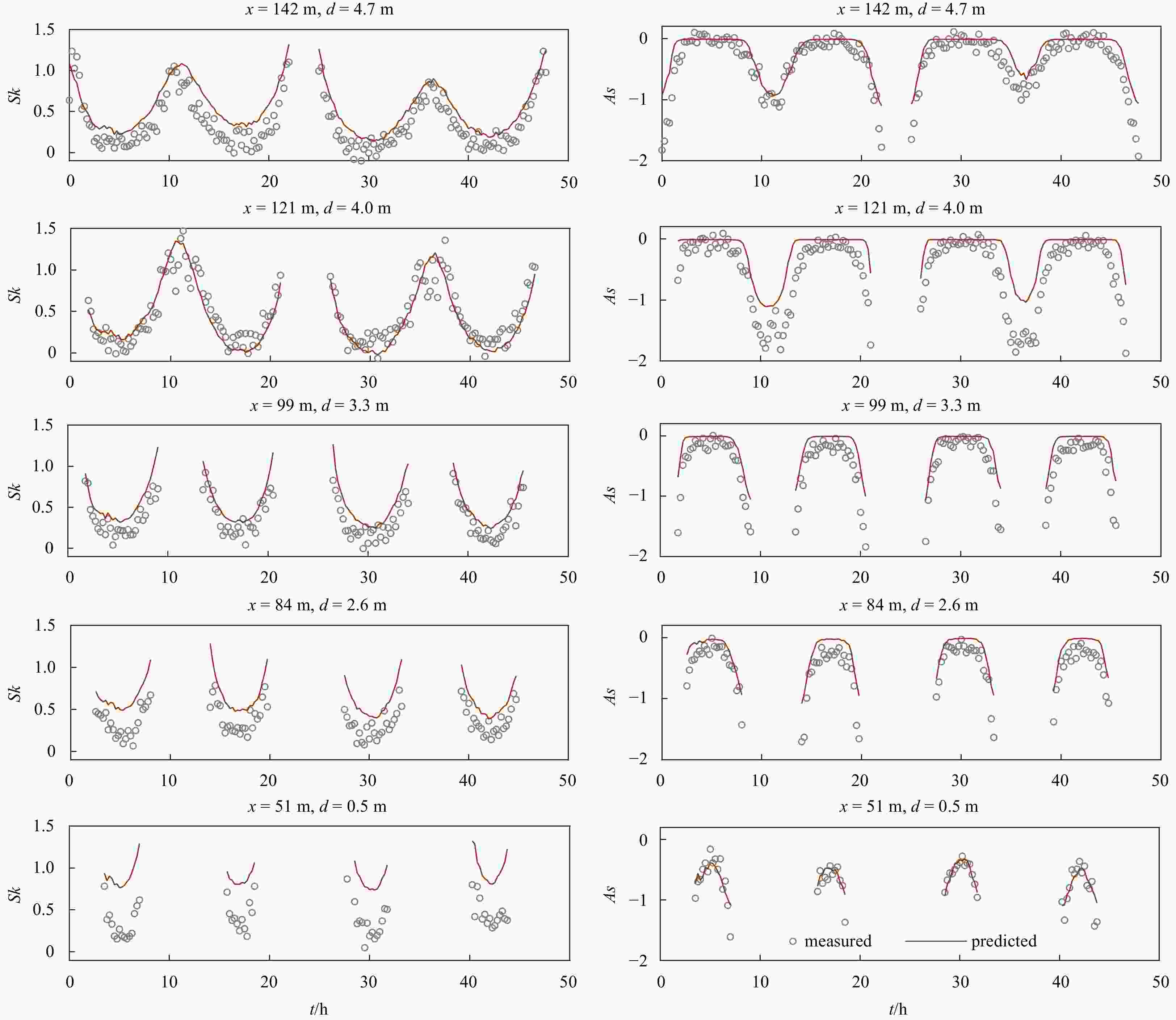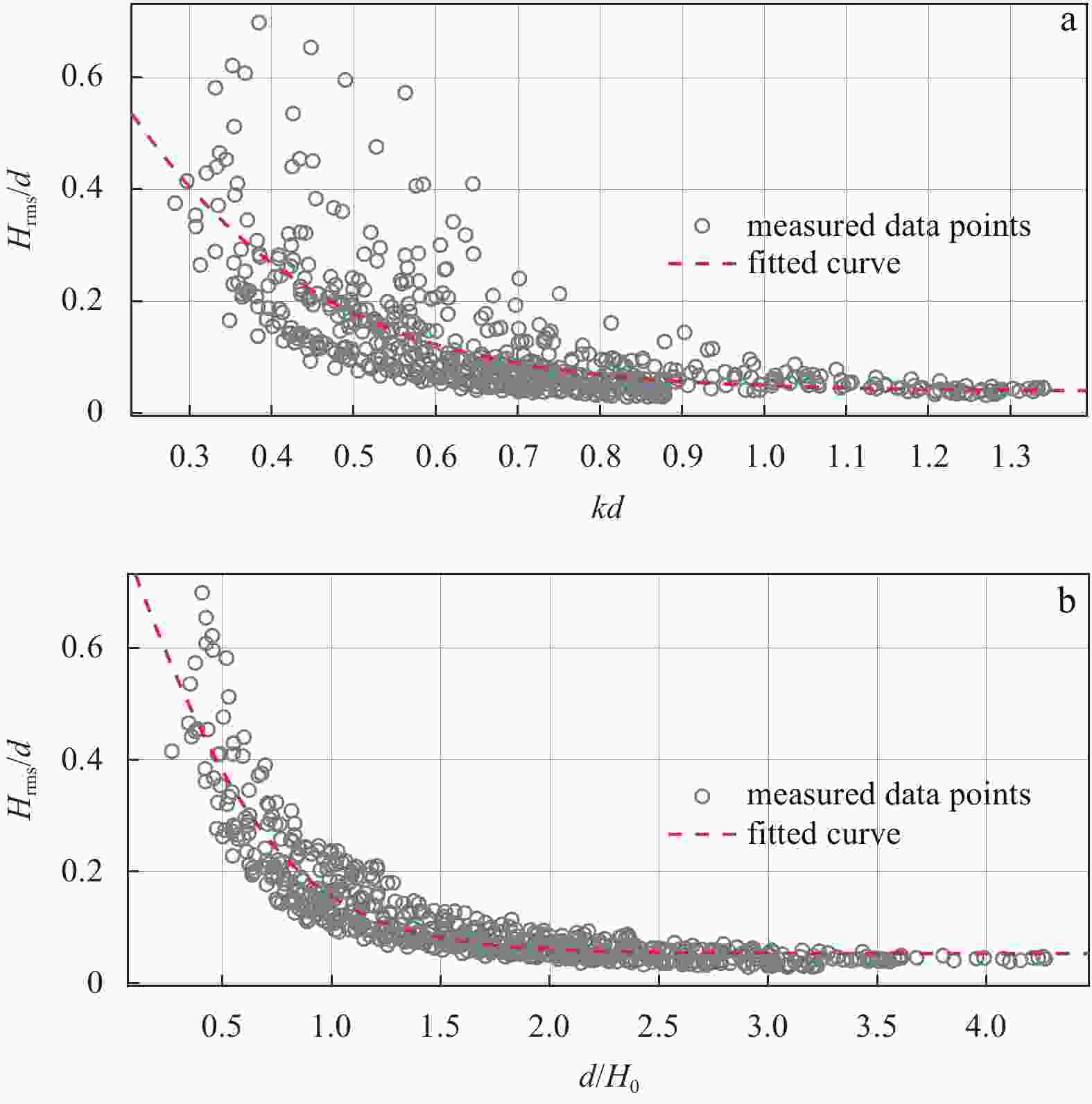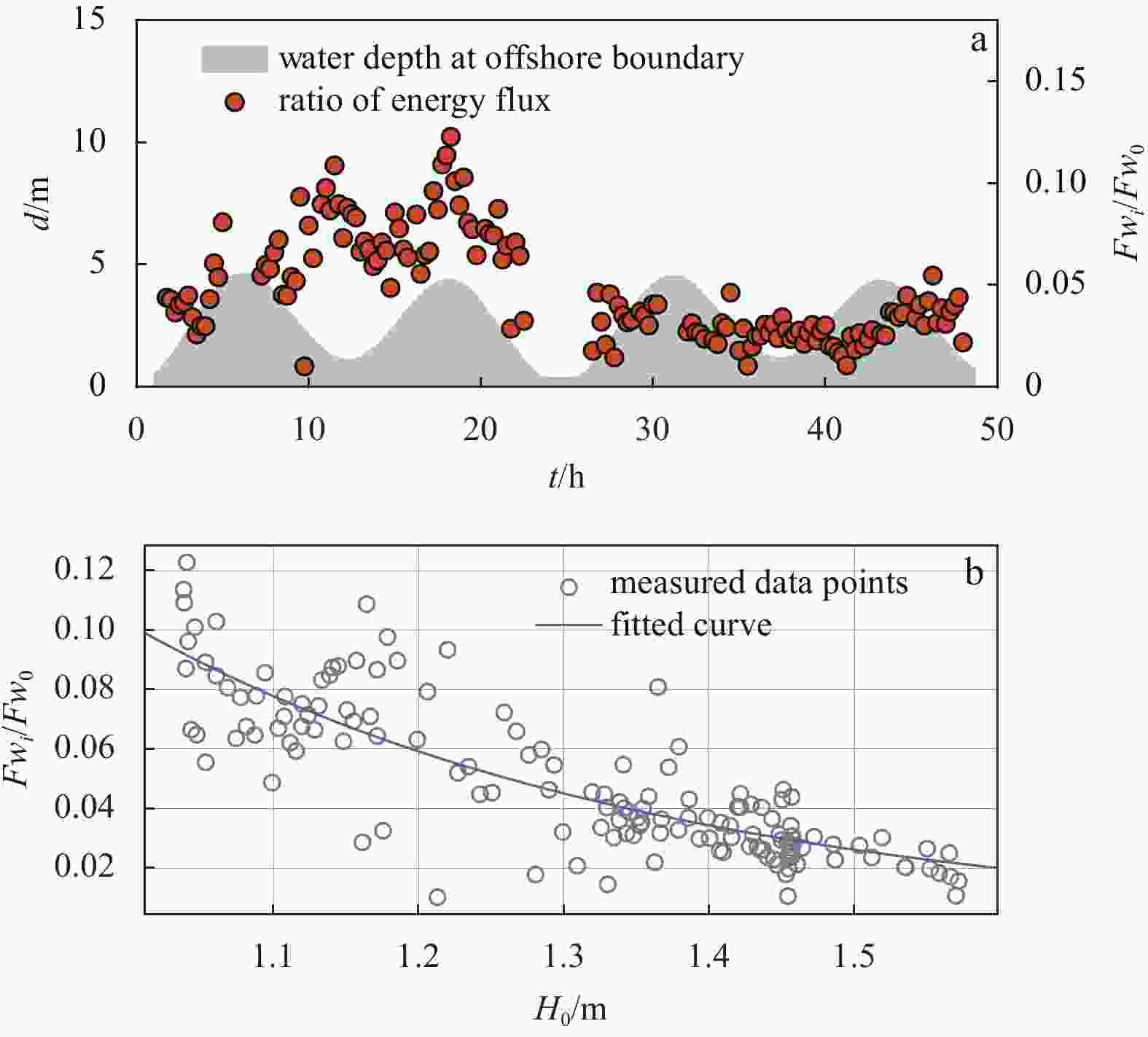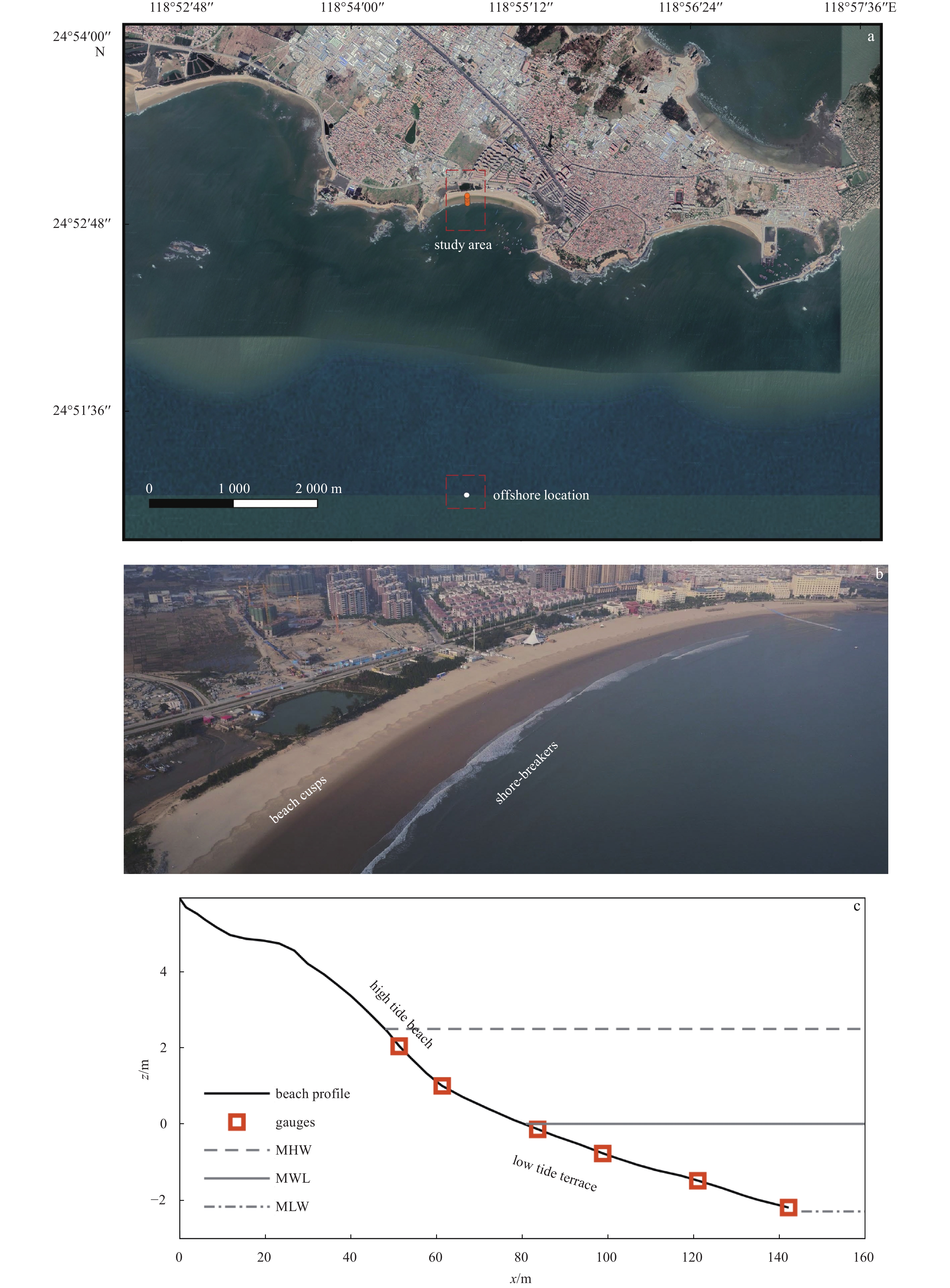Analysis of wave shoaling and shore-breakers on a low tide terrace beach based on in-situ measurements at Xisha Bay on South China coast
-
Abstract: Low tide terrace beach is a main beach type along South China coasts with strong tidal actions. How strong tides affect wave transformations on low tide terrace beach still remains unclear. In this study, in-situ measurements are conducted on the low terrace beach at Xisha Bay to provide quantitative descriptions of wave shoaling and shore-breaker phenomena under the tidal effects. It is found that wave breaking is unsaturated on the low tide terrace beach at Xisha Bay. Magnitudes of wave skewness and asymmetry increase as wave shoals and achieve the maximum value at the shore-breaker, and then decrease rapidly. Mean energy dissipation rates of shore-breakers are tide-modulated since the bottom slope changes at the shoreward boundary of wave propagation in a tidal cycle. The remaining wave energy flux at the initialization of the shore-breaker is 1%–12% of offshore wave energy flux, and the energy flux ratio decreases with increasing offshore wave heights. Wave attenuation at shore-breakers can be estimated directly from offshore wave conditions based on findings in this study, favoring designs of seawalls or beach nourishment projects. Field datasets on wave transformations can also be used for verifications of wave numerical models.
-
Key words:
- sandy beach /
- low tide terrace /
- waves /
- shore-breakers /
- South China coasts
-
Figure 1. Map of the study area and the offshore wave location (a); bird’s eye view of the study area with shore-breakers and beach cusps (b); beach profile of the study domain and the placements of instruments, tidal levels are obtained by nearby tide station (c). MHW: mean high water level; MWL: mean water level; MLW: mean low water level.
Figure 9. Comparisons of measured and predicted Sk and As using new parameterizations of Li et al. (2022a).
Table 1. Notations
Symbol Definition Unit $\eta$ wave surface elevation m Hrms root-mean-square wave height m Tm wave mean period s mn nth-moment variance of the band-passed
filtered water surface elevationm2/sn H0 offshore significant wave height m Sk wave skewness – As wave asymmetry – Ur ursell number – d mean water depth m $\rho$ water density kg/m3 g gravity acceleration m/s2 cg wave group velocity m/s c wave celerity m/s n ratio of group velocity to wave celerity – Dbs mean energy dissipation rate of shore-breaker N/ms Fw wave energy flux N/s fp peak wave frequency Hz k wave number – -
Alexander P S, Holman R A. 2004. Quantification of nearshore morphology based on video imaging. Marine Geology, 208(1): 101–111. doi: 10.1016/j.margeo.2004.04.017 Baldock T E, Holmes P, Bunker S, et al. 1998. Cross-shore hydrodynamics within an unsaturated surf zone. Coastal Engineering, 34(3–4): 173–196 Baldock T E, Holmes P, Horn D P. 1997. Low frequency swash motion induced by wave grouping. Coastal Engineering, 32(2–3): 197–222 Battjes J A. 1974. Surf similarity. In: Proceedings of the 14th International Conference on Coastal Engineering. Copenhagen: American Society of Civil Engineers, 466–480 Bertin X, Martins K, de Bakker A, et al. 2020. Energy transfers and reflection of infragravity waves at a dissipative beach under storm waves. Journal of Geophysical Research: Oceans, 125(5): e2019JC015714 Bishop C T, Donelan M A. 1987. Measuring waves with pressure transducers. Coastal Engineering, 11(4): 309–328. doi: 10.1016/0378-3839(87)90031-7 Booij N. 1981. Gravity waves on water with non-uniform depth and current [dissertation]. Delft: Delft University of Technology, 131 Cai Feng, Cao Chao, Qi Hongshuai, et al. 2022. Rapid migration of mainland China’s coastal erosion vulnerability due to anthropogenic changes. Journal of Environmental Management, 319: 115632. doi: 10.1016/j.jenvman.2022.115632 Cai Feng, Lei Gang, Chen Xingjun, et al. 2012. Engineering feasibility report on beach restoration project at Xisha Bay, Quanzhou. Xiamen: Third Institute of Oceanography, Ministry of Natural Resources Carini R J, Chickadel C C, Jessup A T. 2021. Surf zone waves at the onset of breaking: 2. predicting breaking and breaker type. Journal of Geophysical Research: Oceans, 126(4): e2020JC016935 Chen Hongzhou, Jiang Dahuang, Tang Xiaocheng, et al. 2019. Evolution of irregular wave shape over a fringing reef flat. Ocean Engineering, 192: 106544. doi: 10.1016/j.oceaneng.2019.106544 Chi Shanhang, Zhang Chi, Sui Titi, et al. 2021. Field observation of wave overtopping at sea dike using shore-based video images. Journal of Hydrodynamics, 33(4): 657–672. doi: 10.1007/s42241-021-0073-1 Chi Shanhang, Zhang Chi, Wang Ping, et al. 2023. Morphological evolution of paired sand spits at the Fudu River Mouth: wave effects and anthropogenic factors. Marine Geology, 456: 106991. doi: 10.1016/j.margeo.2023.106991 de Korte E, Castelle B, Tellier E. 2021. A Bayesian network approach to modelling rip-current drownings and shore-break wave injuries. Natural Hazards and Earth System Sciences, 21(7): 2075–2091. doi: 10.5194/nhess-21-2075-2021 Doering J C, Bowen A J. 1995. Parametrization of orbital velocity asymmetries of shoaling and breaking waves using bispectral analysis. Coastal Engineering, 26(1–2): 15–33 Elfrink B, Hanes D M, Ruessink B G. 2006. Parameterization and simulation of near bed orbital velocities under irregular waves in shallow water. Coastal Engineering, 53(11): 915–927. doi: 10.1016/j.coastaleng.2006.06.002 Elgar S, Guza R T. 1985. Observations of bispectra of shoaling surface gravity waves. Journal of Fluid Mechanics, 161: 425–448. doi: 10.1017/S0022112085003007 Fang Kezhao, Liu Zhongbo, Zou Zhili, et al. 2013. Numerical simulation of longshore currents. Advances in Water Science (in Chinese), 24(2): 258–265 Isobe M, Horikawa K. 1982. Study on water particle velocities of shoaling and breaking waves. Coastal Engineering in Japan, 25(1): 109–123. doi: 10.1080/05785634.1982.11924340 Li Yuan, Zhang Chi, Chen Dake, et al. 2021. Barred beach profile equilibrium investigated with a process-based numerical model. Continental Shelf Research, 222: 104432. doi: 10.1016/j.csr.2021.104432 Li Yuan, Zhang Chi, Chen Shubin, et al. 2022a. Influence of artificial sandbar on nonlinear wave transformation: experimental investigation and parameterizations. Ocean Engineering, 257: 111540. doi: 10.1016/j.oceaneng.2022.111540 Li Yuan, Zhang Chi, Dai Weiqi, et al. 2022b. Laboratory investigation on morphology response of submerged artificial sandbar and its impact on beach evolution under storm wave condition. Marine Geology, 443: 106668. doi: 10.1016/j.margeo.2021.106668 Li Yuan, Zhang Chi, Song Jiacheng, et al. 2022c. Tide-modulated wave characteristics and breaking regimes in the intertidal zone of a dissipative beach. Ocean Engineering, 266: 113055. doi: 10.1016/j.oceaneng.2022.113055 Masselink G, Short A D. 1993. The effect of tide range on beach morphodynamics and morphology: a conceptual beach model. Journal of Coastal Research, 9(3): 785–800 Moulton A M B, Hesp P A, da Silva G M, et al. 2021. Surfzone-beach-dune interactions along a variable low wave energy dissipative beach. Marine Geology, 435: 106438. doi: 10.1016/j.margeo.2021.106438 Muller M W. 2018. Beach replenishment and surf-zone injuries along the coast of Delmarva, USA. Ocean & Coastal Management, 151: 127–133 Peng Zhong, Zou Qingping, Reeve D, et al. 2009. Parameterisation and transformation of wave asymmetries over a low-crested breakwater. Coastal Engineering, 56(11–12): 1123–1132 Power H E, Baldock T E, Callaghan D P, et al. 2013. Surf zone states and energy dissipation regimes — A similarity model. Coastal Engineering Journal, 55(1): 1350003-1–1350003-18 Power H E, Hughes M G, Aagaard T, et al. 2010. Nearshore wave height variation in unsaturated surf. Journal of Geophysical Research: Oceans, 115(C8): C08030 Qi Hongshuai, Cai Feng, Lei Gang, et al. 2010. The response of three main beach types to tropical storms in South China. Marine Geology, 275(1–4): 244–254 Raubenheimer B, Guza R T, Elgar S. 1996. Wave transformation across the inner surf zone. Journal of Geophysical Research: Oceans, 101(C11): 25589–25597. doi: 10.1029/96JC02433 Rocha M V L, Michallet H, Silva P A. 2017. Improving the parameterization of wave nonlinearities—The importance of wave steepness, spectral bandwidth and beach slope. Coastal Engineering, 121: 77–89. doi: 10.1016/j.coastaleng.2016.11.012 Ruessink G B, Michallet H, Bonneton P, et al. 2013. GLOBEX: wave dynamics on a gently sloping laboraty beach. In: Proceedings of 7th International Conference on Coastal Dynamics. Arcachon: University of Bordeaux, 1351–1362 Ruessink B G, Ramaekers G, van Rijn L C. 2012. On the parameterization of the free-stream non-linear wave orbital motion in nearshore morphodynamic models. Coastal Engineering, 65: 56–63. doi: 10.1016/j.coastaleng.2012.03.006 Shi Fengyan, Cai Feng, Kirby J T, et al. 2013. Morphological modeling of a nourished bayside beach with a low tide terrace. Coastal Engineering, 78: 23–34. doi: 10.1016/j.coastaleng.2013.03.005 Shi Fengyan, Kirby J T. 2008. Discussion of “Wave setup and setdown generated by obliquely incident waves” by T.-W. Hsu et al., coastal engineering, 53, 865-877, 2006. Coastal Engineering, 55(12): 1247–1249. doi: 10.1016/j.coastaleng.2008.08.001 Shi Jian, Zheng Jinhai, Zhang Chi, et al. 2019. A 39-year high resolution wave hindcast for the Chinese coast: model validation and wave climate analysis. Ocean Engineering, 183: 224–235. doi: 10.1016/j.oceaneng.2019.04.084 Stokes C, Masselink G, Revie M, et al. 2017. Application of multiple linear regression and Bayesian belief network approaches to model life risk to beach users in the UK. Ocean & Coastal Management, 139: 12–23 Thomson J, Elgar S, Raubenheimer B, et al. 2006. Tidal modulation of infragravity waves via nonlinear energy losses in the surfzone. Geophysical Research Letters, 33(5): L05601 Ting F C K, Kirby J T. 1995. Dynamics of surf-zone turbulence in a strong plunging breaker. Coastal Engineering, 24(3–4): 177–204 Wang Ping, Ebersole B A, Smith E R. 2003. Beach-profile evolution under spilling and plunging breakers. Journal of Waterway, Port, Coastal, and Ocean Engineering, 129(1): 41–46 Wright L D, Chappell J, Thom B G, et al. 1979. Morphodynamics of reflective and dissipative beach and inshore systems: southeastern Australia. Marine Geology, 32(1–2): 105–140 Wright L D, Short A D. 1984. Morphodynamic variability of surf zones and beaches: a synthesis. Marine Geology, 56(1–4): 93–118 Yao Yu, He Wenrun, Deng Zhengzhi, et al. 2019. Laboratory investigation of the breaking wave characteristics over a barrier reef under the effect of current. Coastal Engineering Journal, 61(2): 210–223. doi: 10.1080/21664250.2019.1579461 Yao Yu, He Wenrun, Jiang Changbo, et al. 2020. Wave-induced set-up over barrier reefs under the effect of tidal current. Journal of Hydraulic Research, 58(3): 447–459. doi: 10.1080/00221686.2019.1623928 Zhang Chi, Li Yuan, Cai Yu, et al. 2021a. Parameterization of nearshore wave breaker index. Coastal Engineering, 168: 103914. doi: 10.1016/j.coastaleng.2021.103914 Zhang Chi, Li Yuan, Zheng Jinhai, et al. 2021b. Parametric modelling of nearshore wave reflection. Coastal Engineering, 169: 103978 Zhao Shaohua, Cai Feng, Liu Zhifei, et al. 2021. Disturbed climate changes preserved in terrigenous sediments associated with anthropogenic activities during the last century in the Taiwan Strait, East Asia. Marine Geology, 437: 106499. doi: 10.1016/j.margeo.2021.106499 Zheng Jinhai, Zhang Chi, Demirbilek Z, et al. 2014. Numerical study of sandbar migration under wave-undertow interaction. Journal of Waterway, Port, Coastal, and Ocean Engineering, 140(2): 146–159 Zhu Fangfang, Dodd N. 2020. Swash zone morphodynamic modelling including sediment entrained by bore-generated turbulence. Advances in Water Resources, 146: 103756. doi: 10.1016/j.advwatres.2020.103756 -




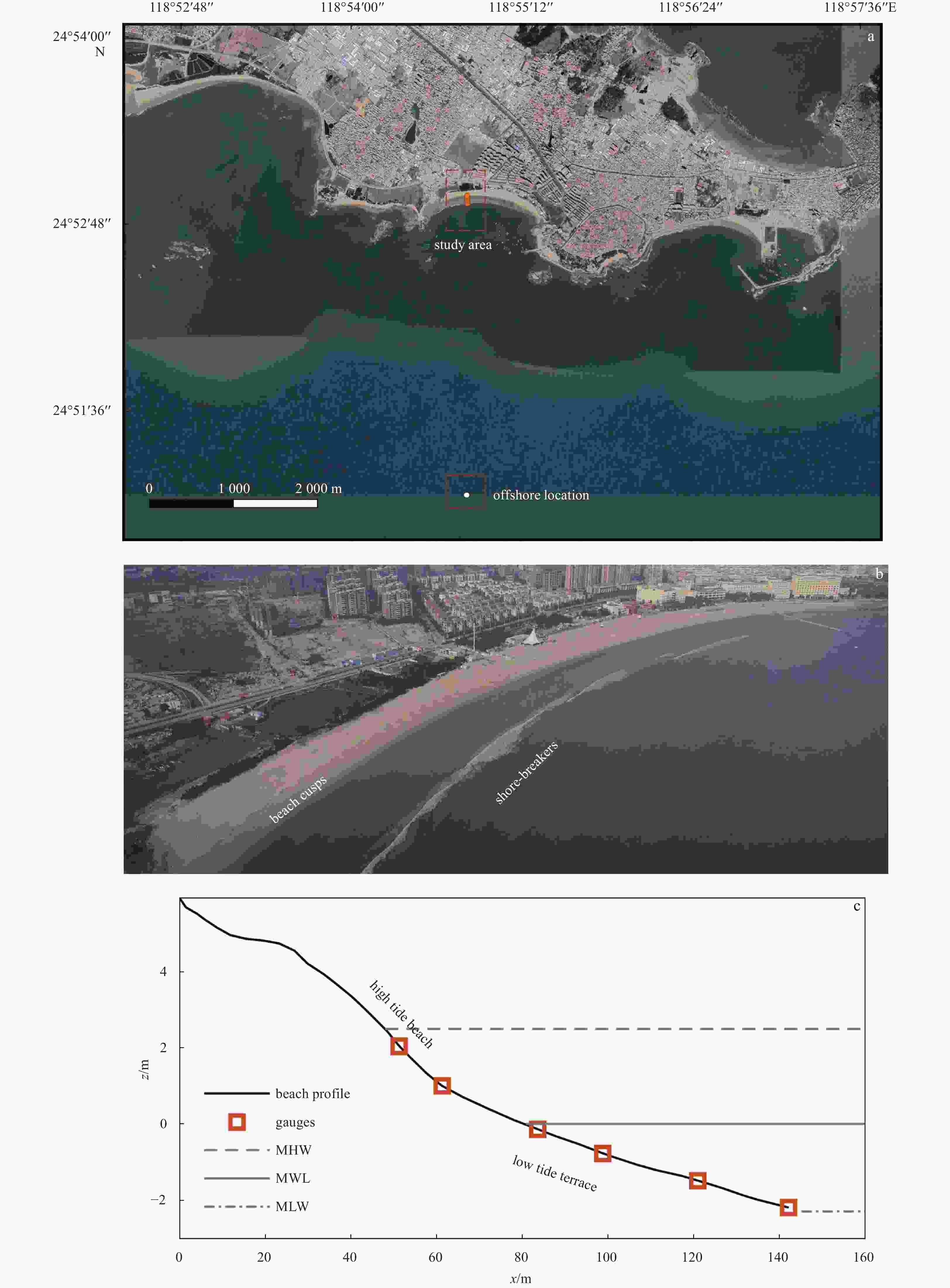
 下载:
下载:
